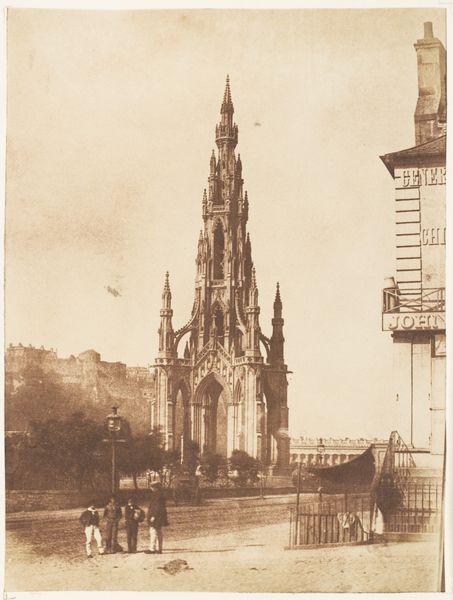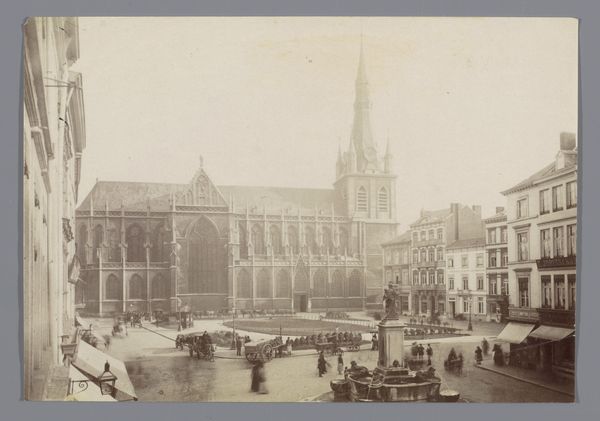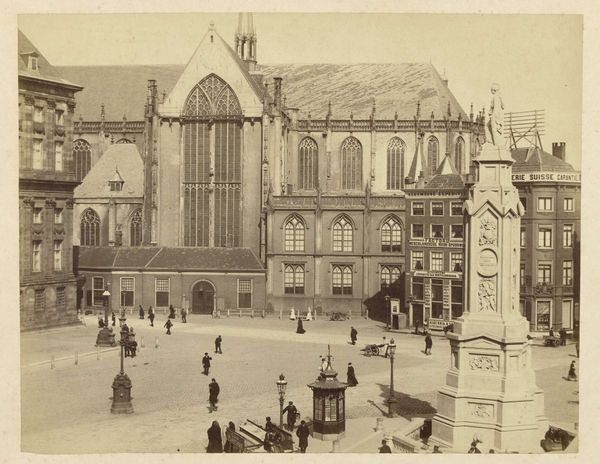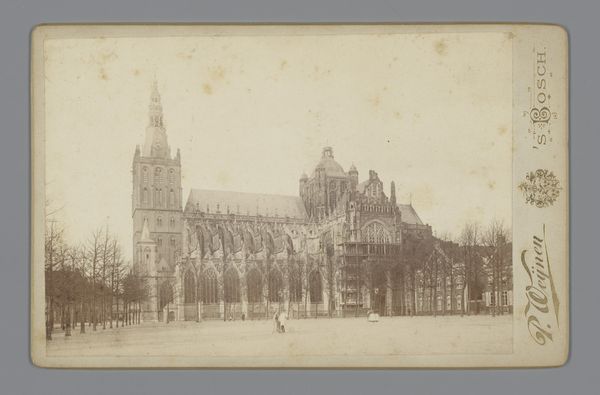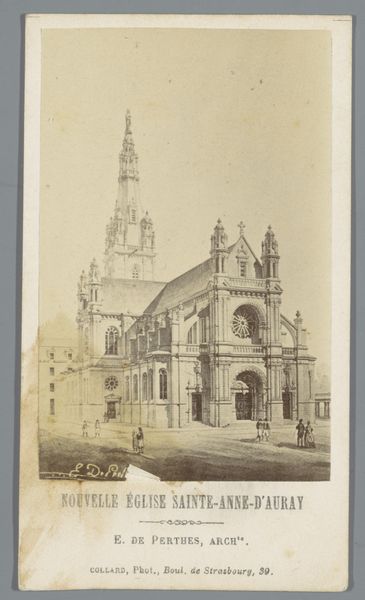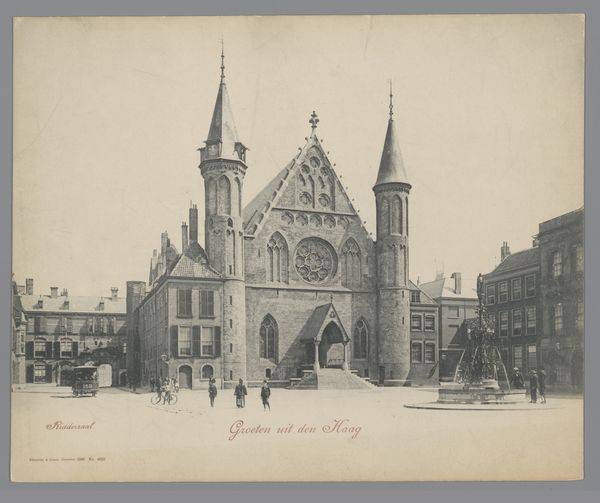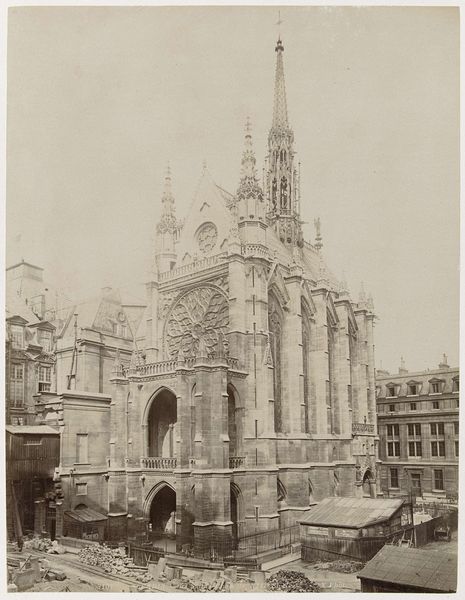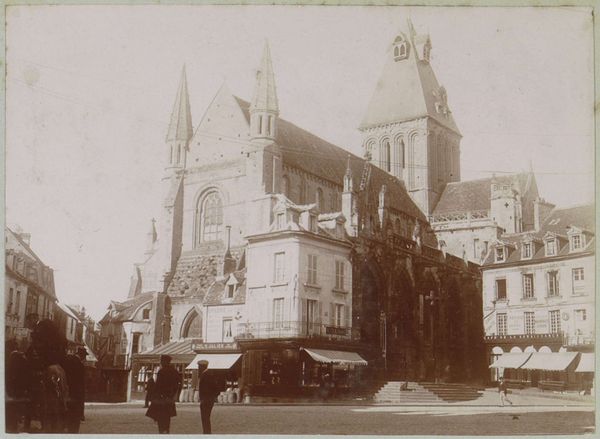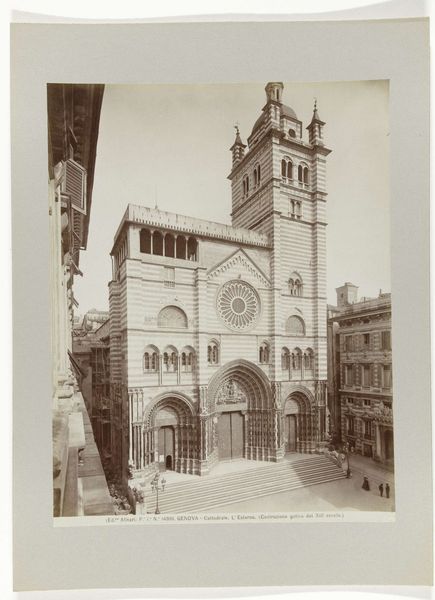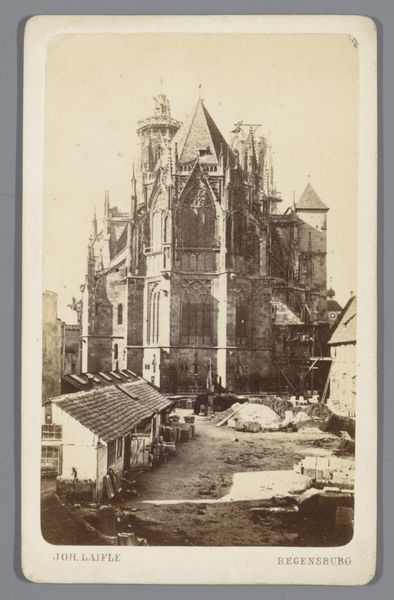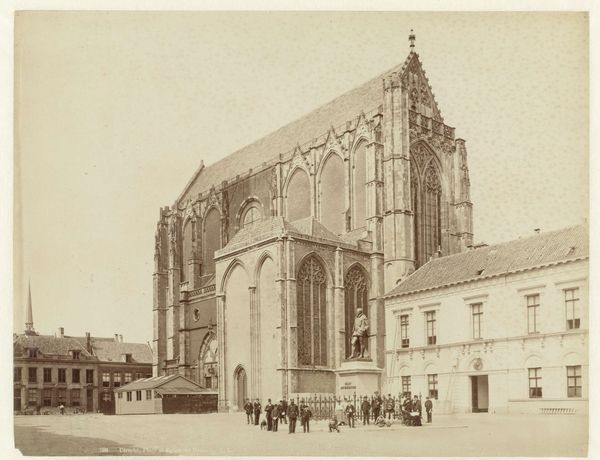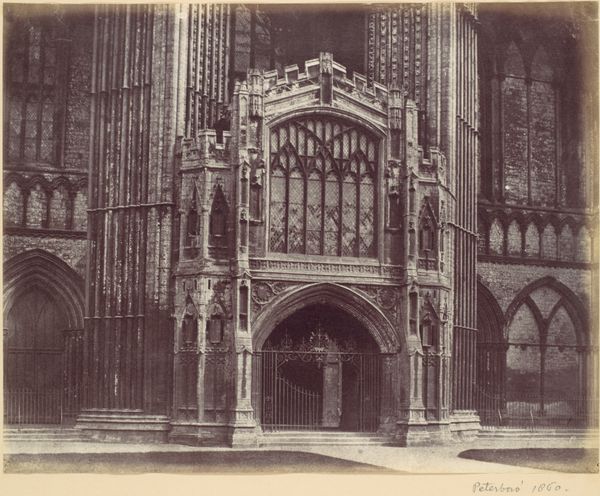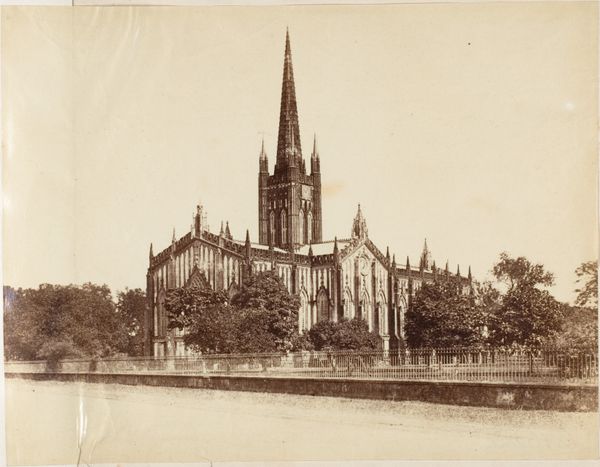
photography, gelatin-silver-print
#
photography
#
gelatin-silver-print
#
19th century
#
cityscape
Dimensions: height 139 mm, width 203 mm
Copyright: Rijks Museum: Open Domain
Editor: So, here we have an exterior view of St Giles' Cathedral in Edinburgh, a gelatin silver print from somewhere between 1880 and 1890. What strikes me is the sharp contrast between the imposing cathedral and the bustling street life. How do you see this interplay of elements? Curator: It's precisely that tension I find compelling. Look closely at the gelatin silver print itself. The materiality of photography in the 19th century was a direct response to the burgeoning urban landscape and industrial revolution. What do you think this relatively 'new' medium might have meant to documenting the old architecture like the cathedral in a rapidly modernising city? Editor: Well, I suppose photography made these grand structures more accessible, democratizing their image, while also hinting at the labor involved in its construction. Unlike a painting, the "artist" relies on chemical processes and sunlight to expose a print... so there's this record of exposure itself? Curator: Precisely. And the gelatin silver printing process became the dominant method of the time, because it improved upon the reproduction of detail, mass production, and affordability. Think about the consumption of these images. These photographs were not only documentation but became commodities themselves, circulating within a culture increasingly fascinated by images and industrial production. Who bought them? What was their value? Editor: So, by examining the photograph's creation and consumption, we start to uncover a whole network of social and economic relationships in Victorian Edinburgh. Is that how we break down traditional hierarchies of artistic value, you mean? Curator: Yes. It allows us to consider both the cathedral's intended purpose, as a structure dictating its social role through visual impressiveness, as well as its appropriation within industrial, image-based systems. And consider all of this now in relation to tourism as part of the emerging economics of 19th century. The photograph aided, or maybe instigated that tourism! Editor: That is fascinating; I see how analyzing the production and social life of the image offers so much more than just describing what's pictured. Thank you! Curator: My pleasure. Considering art as embedded within these material conditions truly enriches our understanding.
Comments
No comments
Be the first to comment and join the conversation on the ultimate creative platform.
